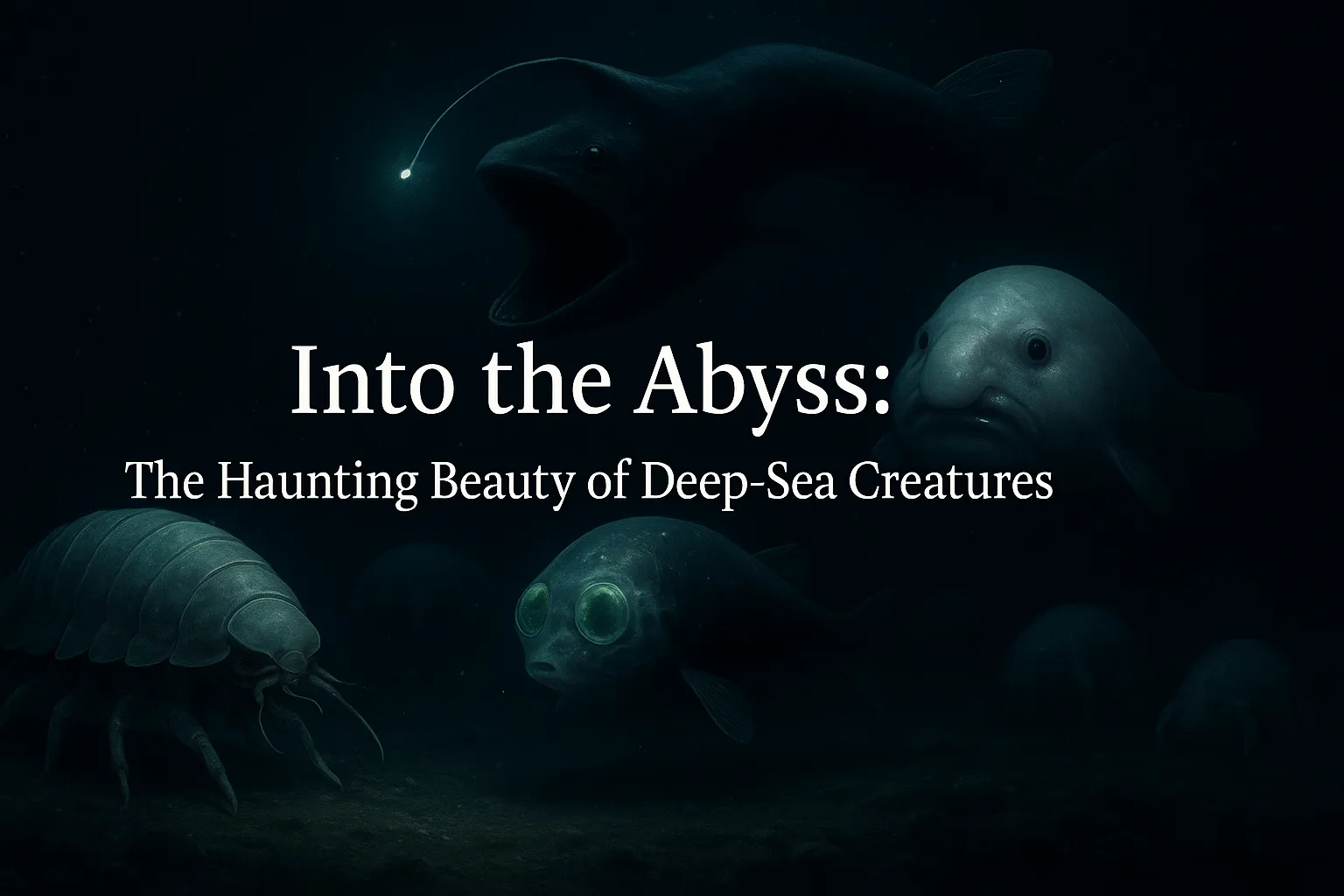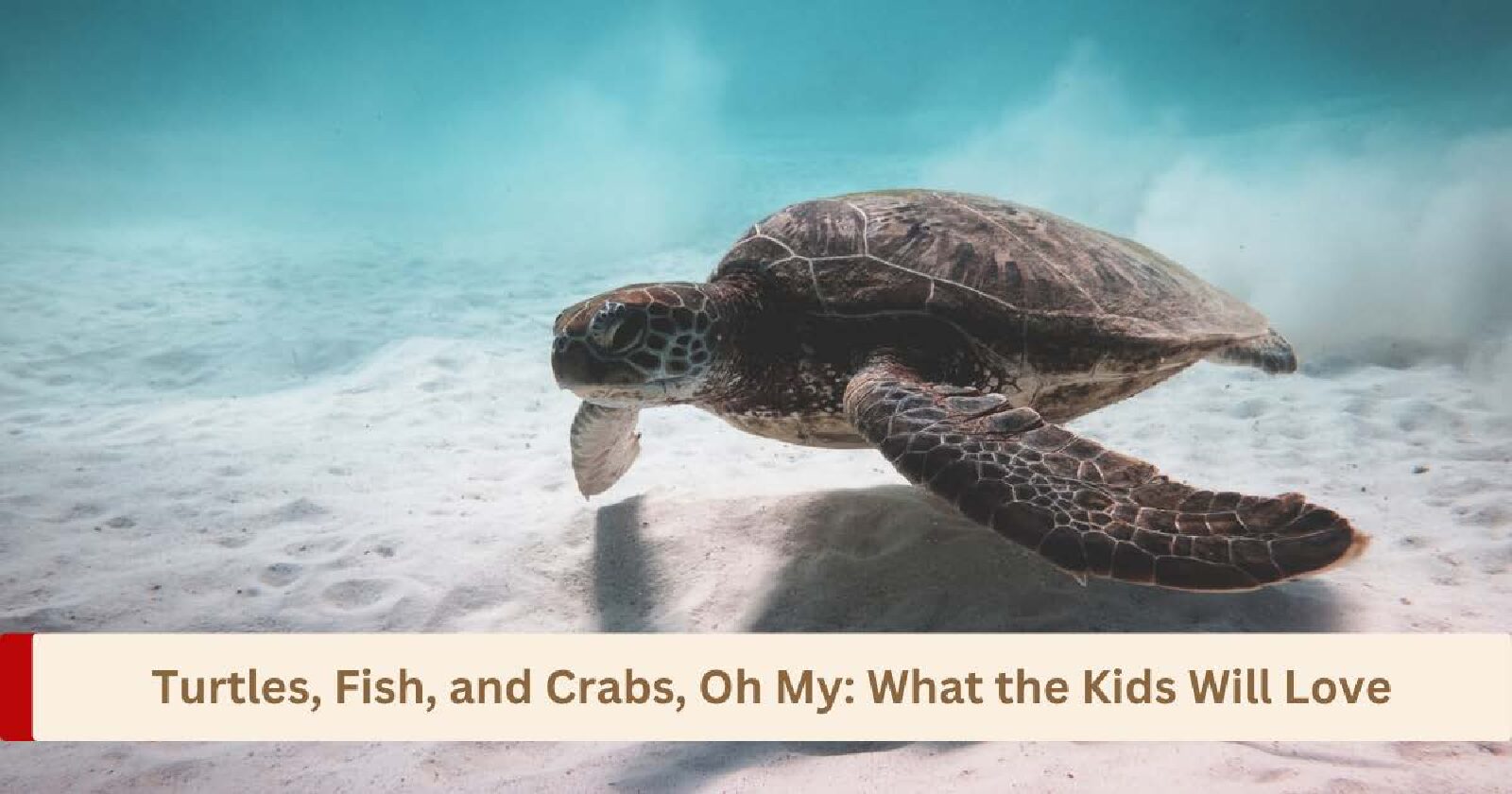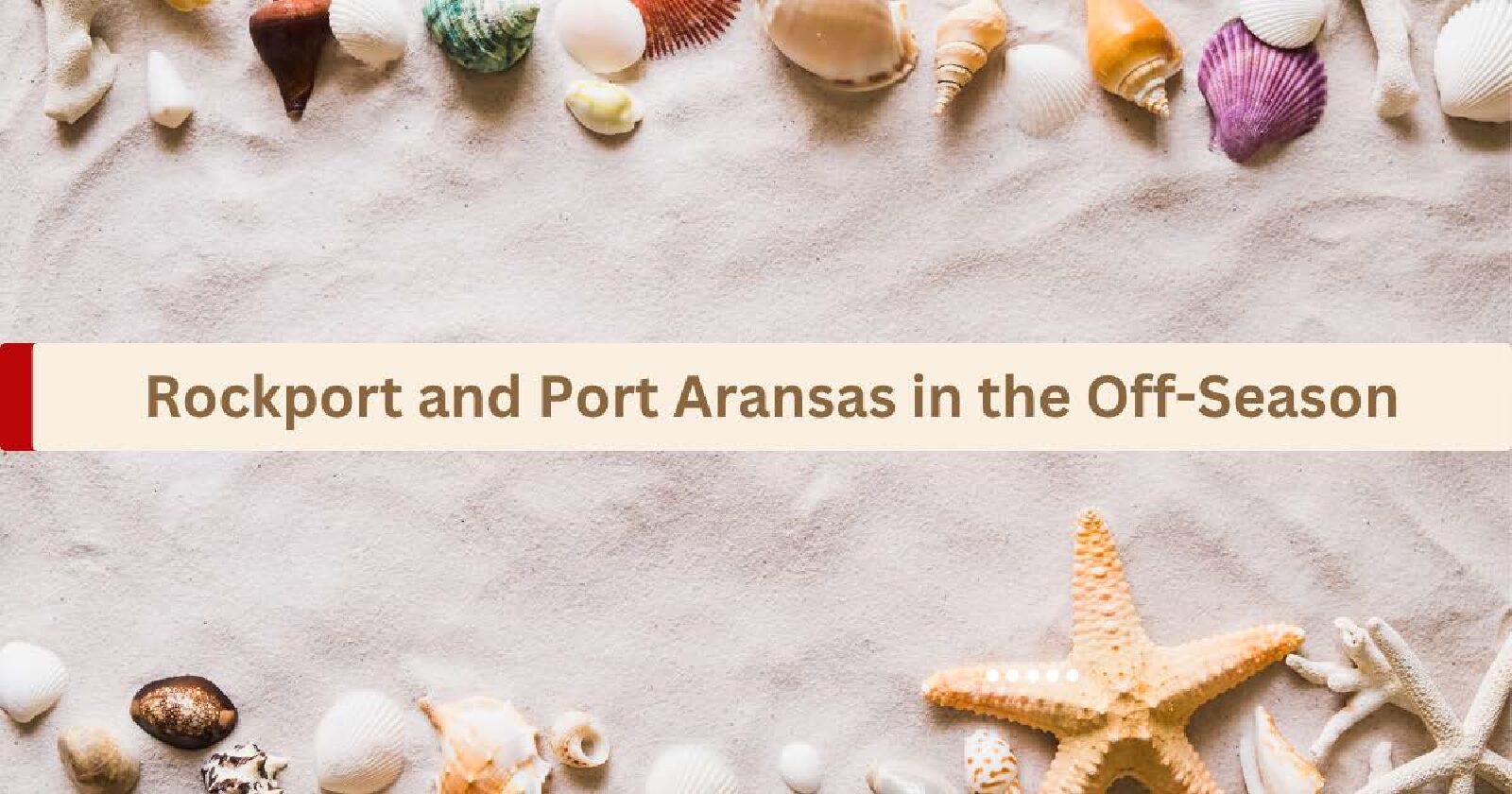Have you ever wondered what lurks in the mysterious depths of the ocean? The deep sea is Earth’s final
frontier—a realm of crushing pressure, eternal darkness, and creatures so bizarre they seem ripped
from a sci-fi novel. Yet these animals aren’t monsters; they’re marvels of evolution, sculpted by millions
of years of survival in one of the planet’s harshest environments. Let’s dive into the abyss and meet 10
jaw-dropping denizens of the deep—no imagination required.
1.Anglerfish: The Bioluminescent Matchmaker
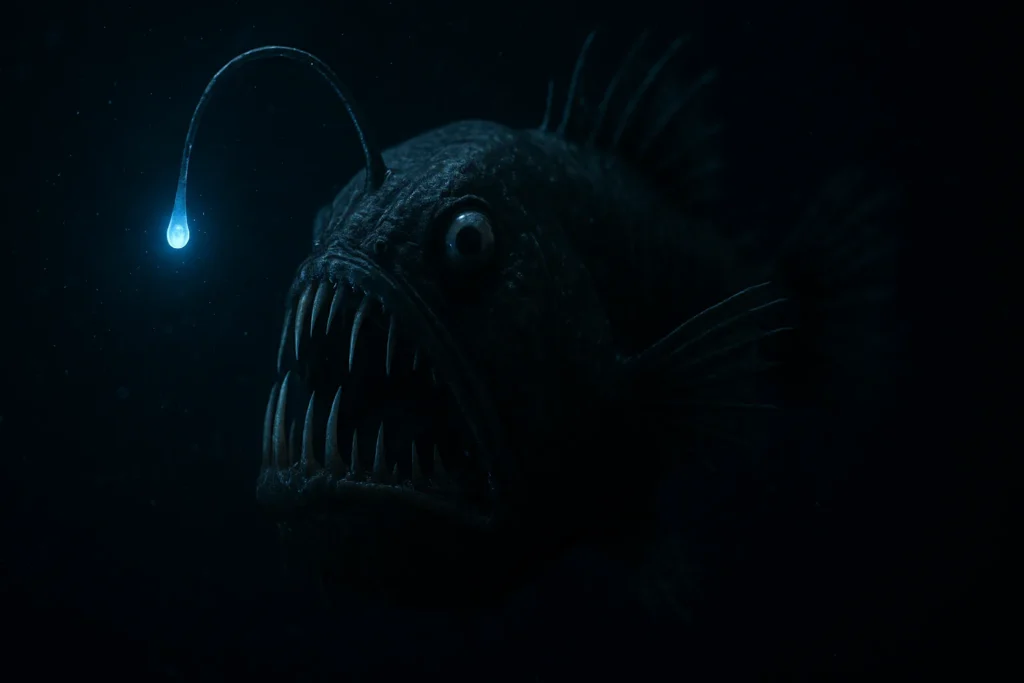
Imagine a fish with a built-in fishing rod on its head. That’s the anglerfish for you. The anglerfish is the
poster child of deep-sea weirdness, and for good reason.
Females wield a glowing lure—a modified spine tipped with bioluminescent bacteria—to attract prey in
the pitch-black depths. But their real party trick? Parasitic mating. Males, tiny compared to females,
latch onto their partners like permanent backpack sperm banks, fusing into their bodies until only their
gonads remain.
It’s a romantic strategy born from the abyss’s loneliness—when you might never see another mate, you
become one.
2.Giant Isopod: The Oversized Pill Bug
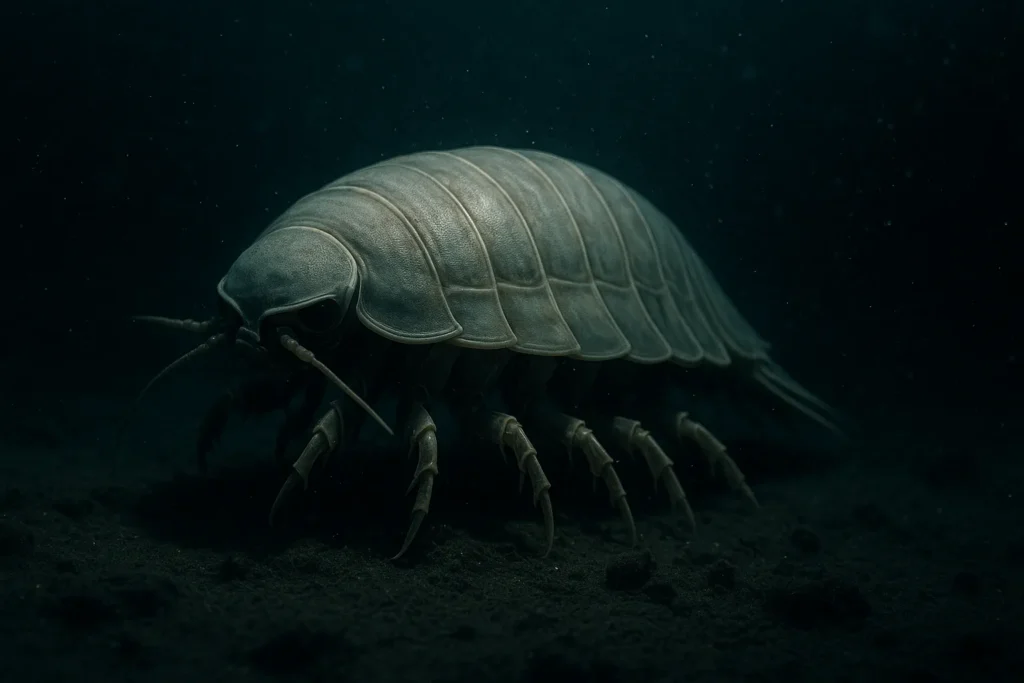
Imagine a woodlouse the size of a house cat. Meet the giant isopod, a crustacean that exemplifies deepsea gigantism, where species grow larger than their shallow-water cousins.
Giant isopods can grow up to 20 inches long and are equipped with a tough exoskeleton. These armored
scavengers roam the ocean floor, devouring carcasses with four sets of jaws.
These creatures are known for their ability to survive long periods without food, a handy adaptation in
the nutrient-scarce deep sea.
Bonus trivia: They’ve existed virtually unchanged for 160 million years, making them true “living fossils.”
3.Vampire Squid: The Gentle Phantom

Despite its hellish name (Vampyroteuthis infernalis means “vampire squid from hell”), the vampire squid
doesn’t suck blood. Resembling a floating umbrella with glowing blue eyes, it avoids fights by ejecting
bioluminescent mucus to confuse predators.
Instead, it feeds on “marine snow”—a mix of dead organisms and fecal matter drifting from above. Its
dark, webbed arms and bioluminescent displays make it a master of disguise, allowing it to evade
predators in the deep. Think of it as the ocean’s goth recycler, thriving in oxygen-starved zones where
most life suffocates.
4.Gulper Eel: The Living Balloon
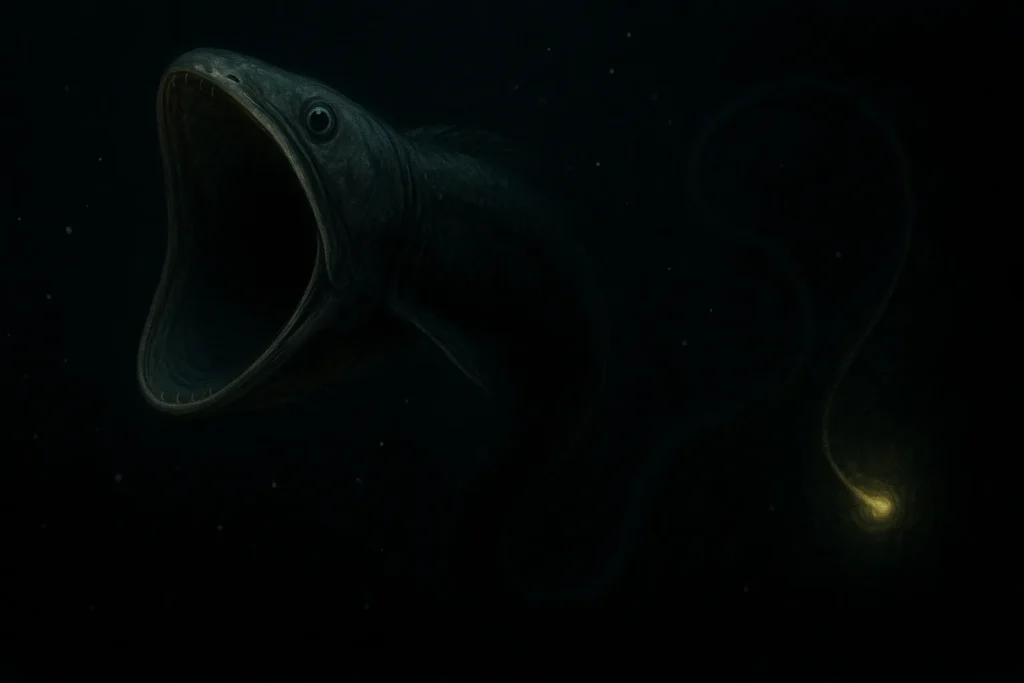
With a mouth larger than its body and a tail tipped with a bioluminescent lure, the gulper eel or pelican
eel or the umbrella mouth gulper looks like a Muppet designed by Tim Burton. Its jaw unhinges to
swallow prey whole, and its stomach expands like a grocery bag. But here’s the kicker: As males age,
their teeth vanish, and their sense of smell heightens—all to focus on finding a mate in the vast, empty
dark. Priorities, right?
5.Frilled Shark: The Prehistoric Serpent
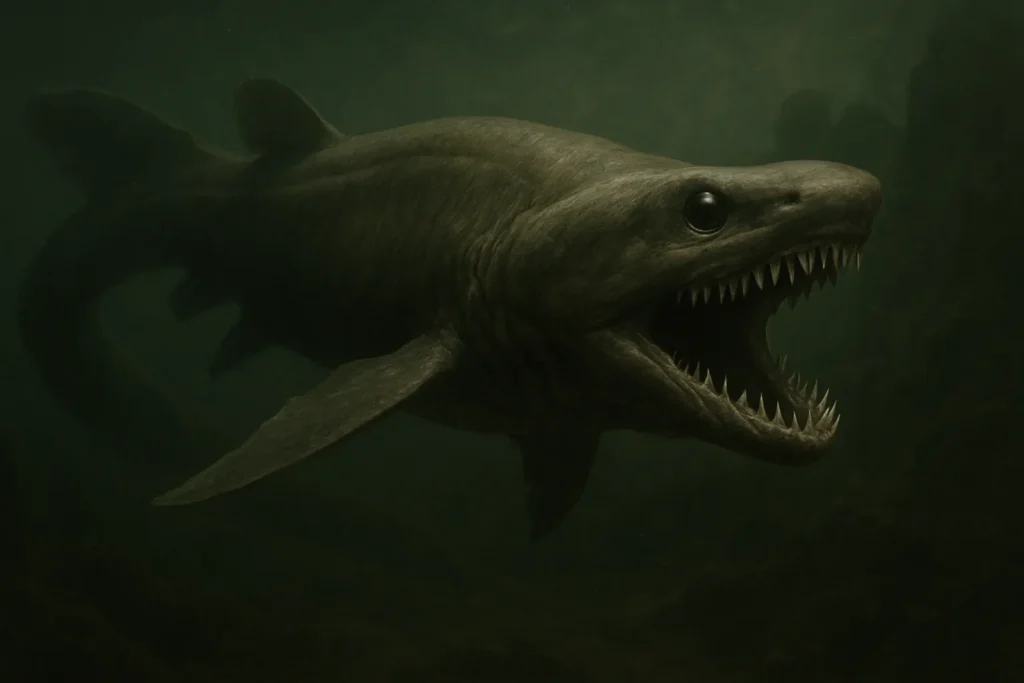
This eel-like shark, with 300 needle-shaped teeth and a lineage dating back 80 million years, is the
ocean’s answer to a living fossil. It hunts by lunging like a snake, swallowing squid whole. Rarely seen
alive, it’s been hauled up from depths of 4,265 feet, looking like a relic from the age of dinosaurs. If
Jurassic Park had an aquarium exhibit, this would be the star.
6.Blobfish: The Misunderrowned Gelatin
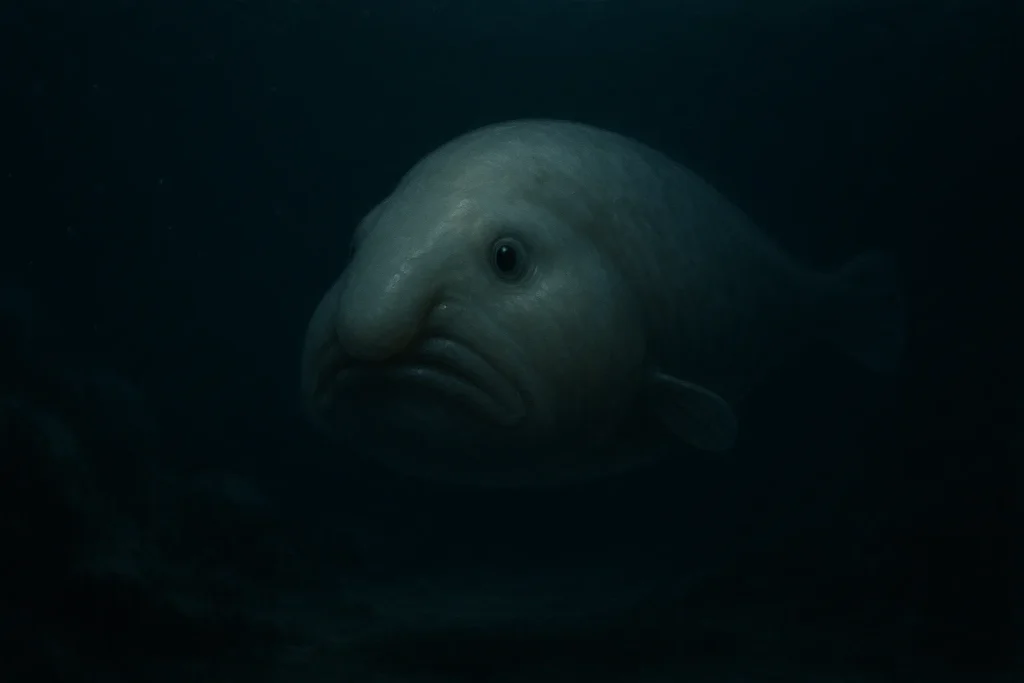
Voted the “World’s Ugliest Animal” in 2013, the blobfish is the victim of bad PR. In its natural habitat—
2,000–4,000 feet deep—it’s a sleek, pressure-adapted predator. But when brought to the surface, its
gelatinous body decompresses into a saggy meme. Lesson learned: Don’t judge a fish by its out-of-water
selfie.
7.Giant Siphonophore: The 150-Foot String of Terror
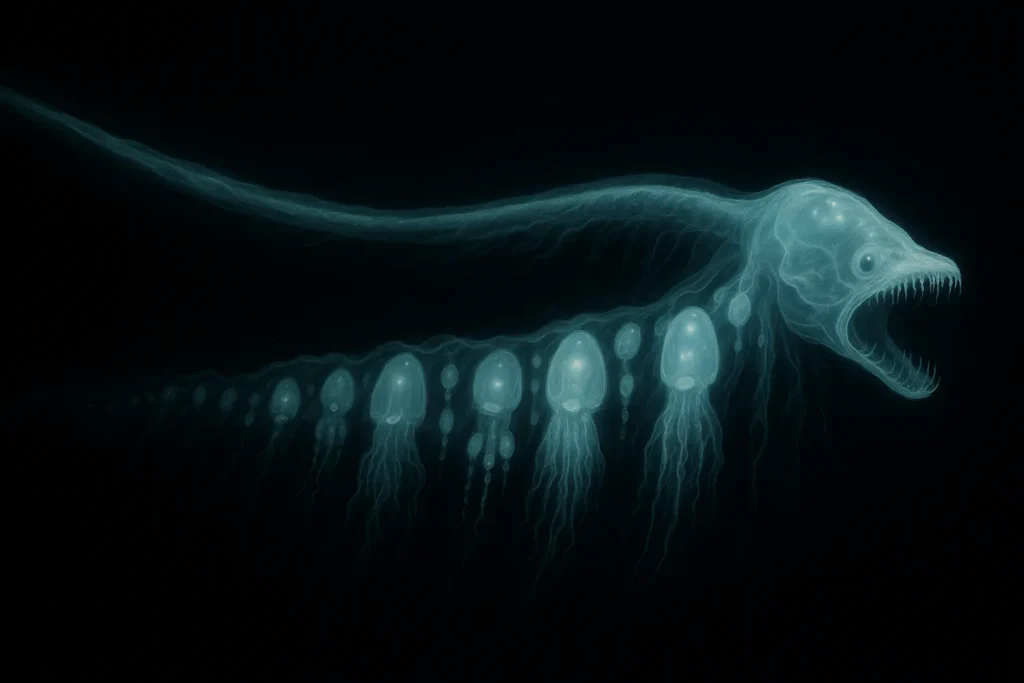
This creature isn’t a single animal but a colony of thousands of clones, each with a specialized role—
stinging, digesting, or reproducing. The Praya dubia species stretches up to 150 feet long, making it one
of the longest animals on Earth15. Drifting like a deadly chandelier in the midnight zone, it’s a reminder
that teamwork (or clone-work?) makes the dream work.
8.Barreleye Fish: The Deep-Sea Telescope
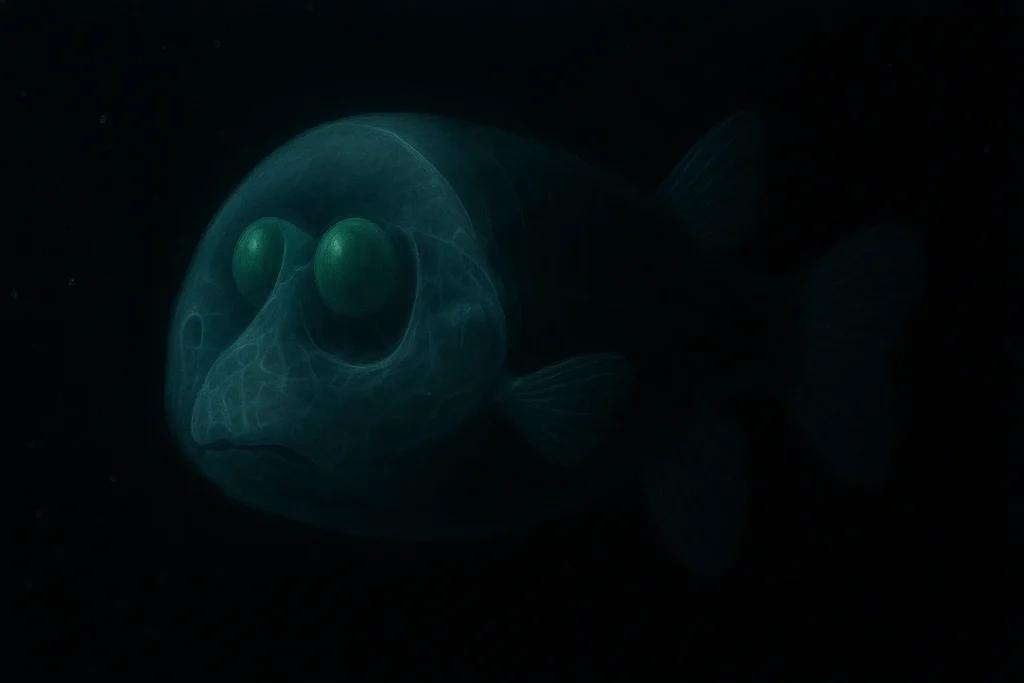
This fish boasts a transparent head, allowing it to look upward through its skull to spot prey. Its tubular
eyes can rotate forward like binoculars, and its green lenses filter out sunlight, letting it focus on
bioluminescent prey. The barreleye’s unique anatomy has fascinated scientists since its discovery. It’s
basically the ocean’s version of a submarine periscope—with better optics.
9.Bobbit Worm: The Sand-Burrowing Guillotine
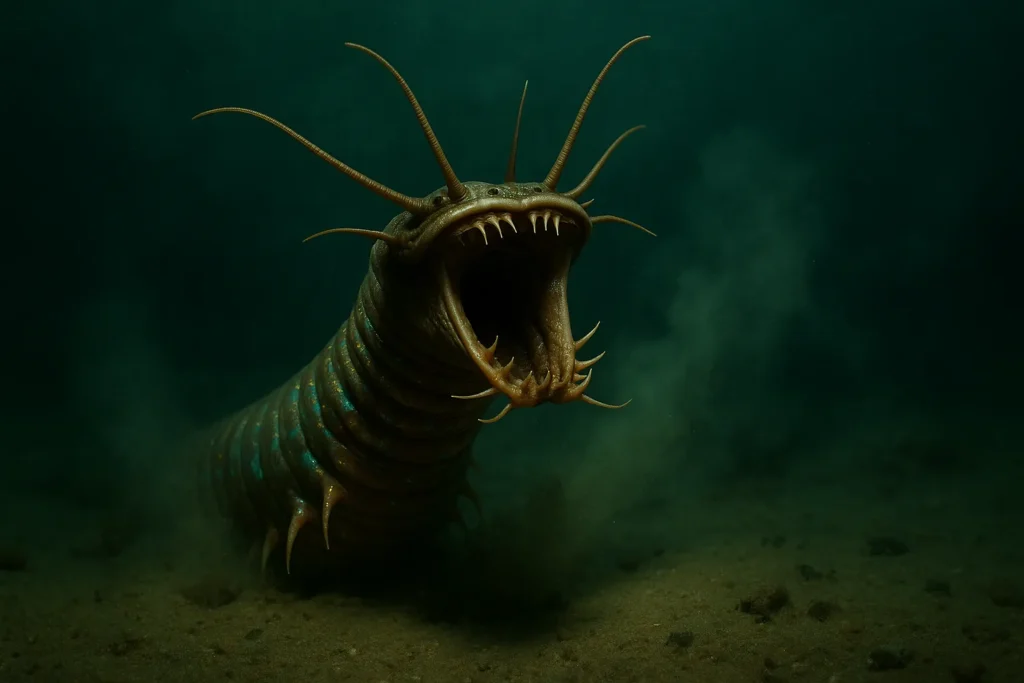
Named after a notorious criminal, this 10-foot worm buries itself in the seabed, leaving only its
antennae exposed. When prey swims by, it strikes with lightning speed, slicing fish in half with scissorlike jaws. Even creepier? It can regenerate lost body parts. Think of it as the ocean’s answer to a horror
movie villain—one that never stays dead.
10.Sea Pig: The Deep-Ocean Vacuum
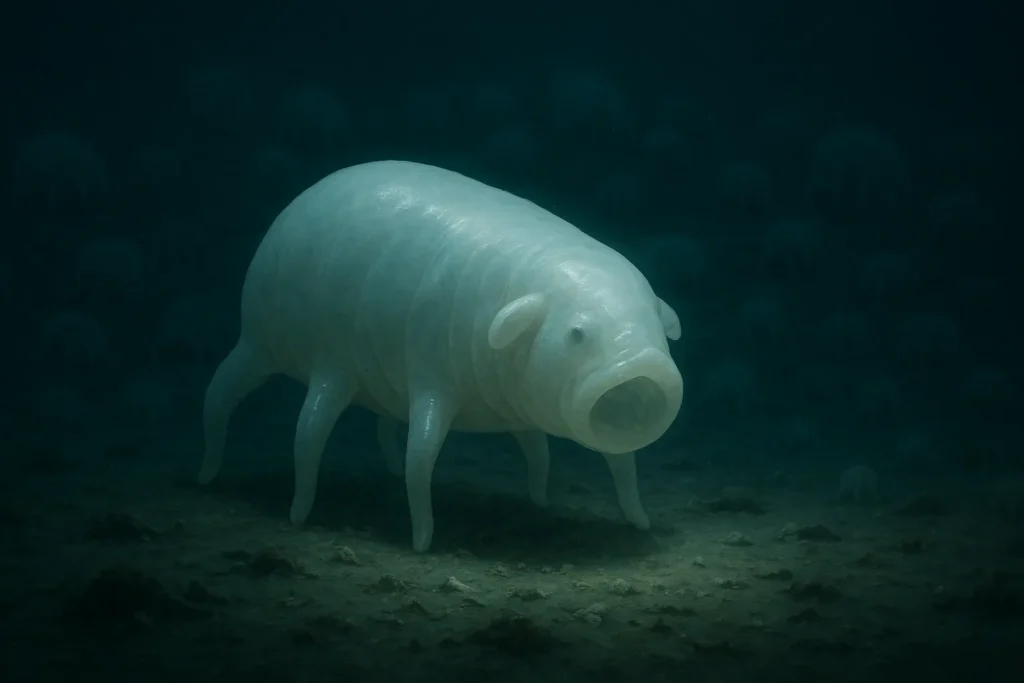
These translucent, blobby sea cucumbers look like water balloons with legs. Using tube-like feet, they
trawl the abyssal plains for decaying organic matter, acting as the ocean’s cleanup crew. They’re also
social creatures, gathering in herds of hundreds to feast on whale carcasses7. Not bad for a creature
that resembles a half-melted gummy bear.
Why These Creatures Matter
The deep sea isn’t just a freak show—it’s a living laboratory. The anglerfish’s bioluminescence inspires
medical imaging tech. The giant isopod’s survival skills could teach us about hibernation. Even the
blobfish’s gelatinous body offers clues about pressure adaptation. Yet a little more than 23% of the
ocean floor is mapped, and deep-sea mining threatens these fragile ecosystems.
Final Thoughts
The deep sea is a realm of wonder and mystery, home to creatures that challenge our understanding of
life on Earth. These ten incredible beings showcase the adaptability and diversity of life in one of the
planet’s most extreme environments.
So next time you see a “bizarre” deep-sea creature, remember: They’re not aliens. They’re Earth’s
original extremophiles—proof that life thrives where we least expect it. As marine biologist Sylvia Earle
says, “We’ve got to love our oceans—they’re the blue heart of the planet.” Let’s keep it beating.

